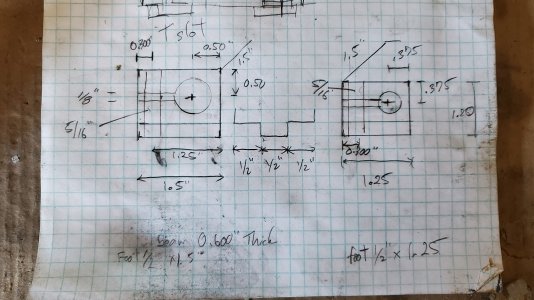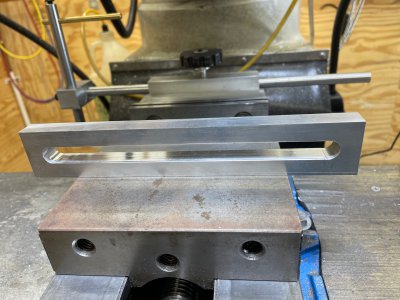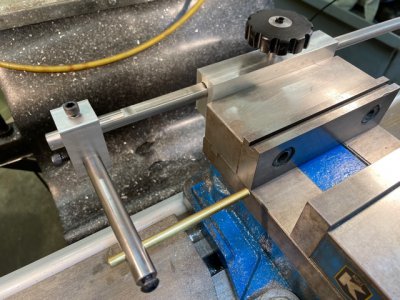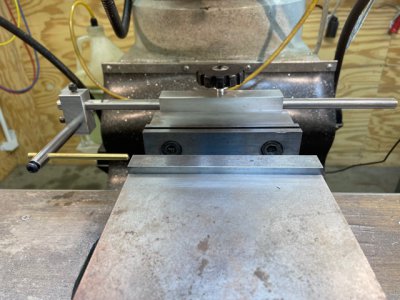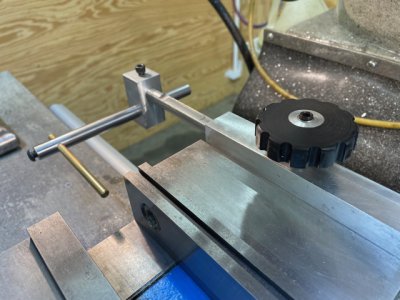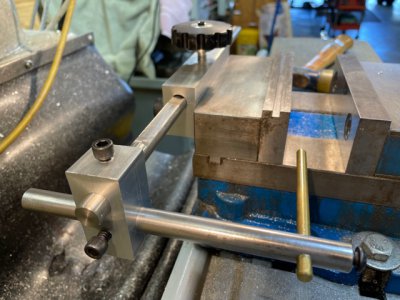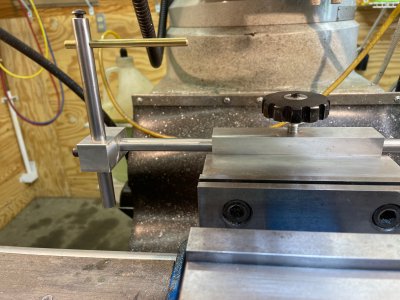- Joined
- Jun 12, 2014
- Messages
- 4,833
I have been using a T-Nut type vise stop system, kind of flops around, was hard to adjust, and just tired of cleaning all the swarf out of the T slots. I wanted to come up with a stop system design that mounted to the back of the vise so I can install covers over the mill bed, was easy to adjust in any one axis and had a wide adjustment range. The design I came up with mounts a 5/8" round bar to the back of the vise, and also adds a taller 1" thick jaw that I can use to hold bigger work on the vise. There is a single adjustment lever at the front and back of a sliding T-Nut adjustment system, and each one can lock two axis at the same time. The adjustment stop system was milled from 6061, adjustment bars (3/8, 5/8") from O1 rod and 1018 CRS used for the rear jaw stop. This stop system was more of a different design setup as opposed difficulty in machining the parts. One challenge was drilling the 5/8" hole through 6" of 1018 CRS, I drilled this from both sides so required accurate alignment, would have been nice to have a 5/8" reamer to takes clean up the hole, but just ran a long 5/8" drill back and forth through the hole. The 5/8" rod has a flat milled on the top which locks the bar in the same plane and will not be damaged by the locking lever when tightened.
The two rod clamps are sized slightly different and slide in the T with an opposing sliding T-Nut underneath. The sliding T-nut type design has split clamps and can adjust both X and Y, Y and Z, or X with a single lever. It seems to be quite rigid, gives a wide range of adjustment and can swing back or be removed quickly. Next project will be to make swarf covers for the mill bed on either side of the vise and a front taller Jaw.
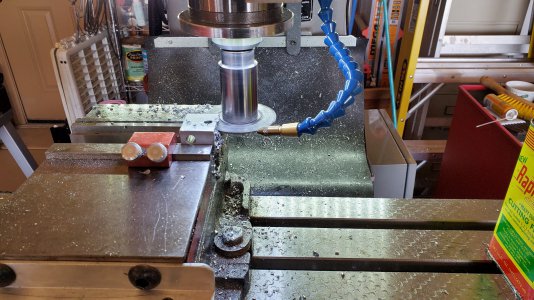
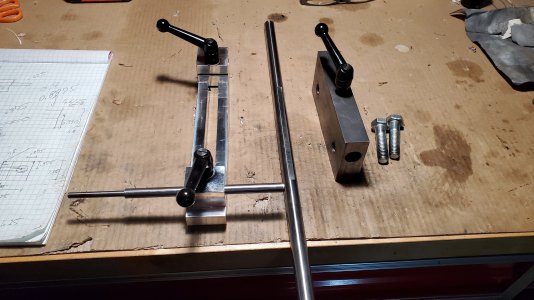
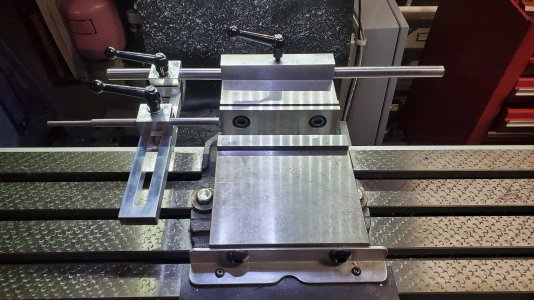
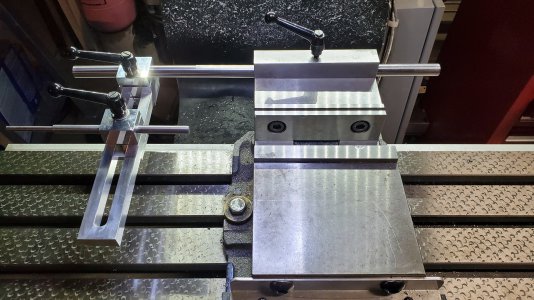
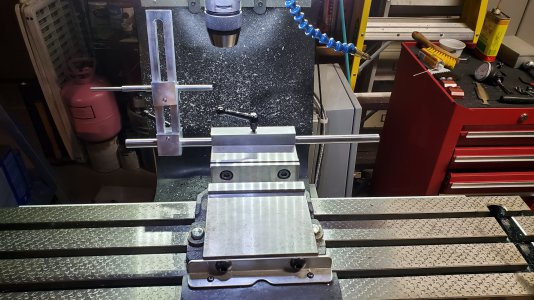
The two rod clamps are sized slightly different and slide in the T with an opposing sliding T-Nut underneath. The sliding T-nut type design has split clamps and can adjust both X and Y, Y and Z, or X with a single lever. It seems to be quite rigid, gives a wide range of adjustment and can swing back or be removed quickly. Next project will be to make swarf covers for the mill bed on either side of the vise and a front taller Jaw.







